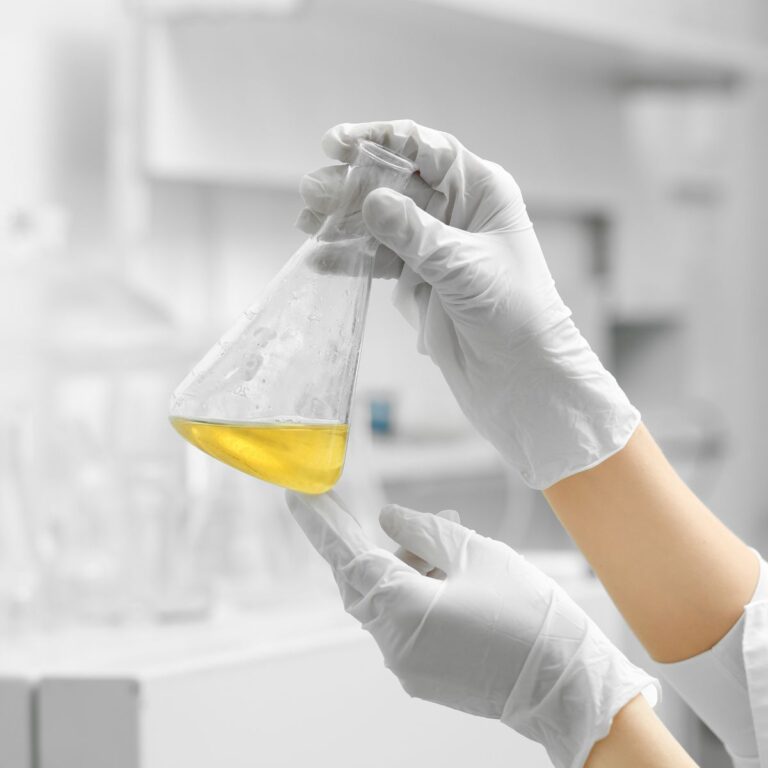Hypochlorous Acid Testing
Oxford Analytical are a GLP approved facility for all your Hypochlorous Acid testing requirements.
Hypochlorous acid (HOCl or HClO) is a weak acid that forms when chlorine dissolves in water, and the acid itself partially dissociates, forming hypochlorite, ClO−. HClO and ClO− are also oxidizers, and the primary disinfection agents of chlorine solutions. To clarify HClO cannot be isolated from these solutions due to rapid equilibration with its precursor. Sodium hypochlorite (NaClO) and calcium hypochlorite (Ca(ClO)2), are bleaches, deodorants, and disinfectants.
Hypochlorous acid is found naturally in white blood cells of mammals. To clarify this includes the human body. It is non-toxic and has been used as a safe wound care solution for many years.
When dissolved in water, hypochlorous acid water has been found to have strong disinfection properties. As a result, given this and its non-toxicity, it has been identified as a useful cleaning agent and sanitizer. It has been identified by the US Environmental Protection Agency as a disinfectant effective against COVID-19, backed by clinical studies.
Because of its ability to penetrate pathogens’ membranes, it is also used as a commercial deodoriser.
Hypochlorous acid was discovered in 1834 by the French chemist Antoine Jérôme Balard (1802–1876) by adding, to a flask of chlorine gas, a dilute suspension of mercury(II) oxide in water. He also named the acid and its compounds.
It is relatively easy to make. However it is difficult to maintain a stable hypochlorous acid solution. It is not until recent years that scientists have been able to cost-effectively produce and maintain hypochlorous acid water for stable commercial use.
Nature’s super powerful disinfectant, and also the ingredient that gives bleach its anti-microbial power. When the pH of the solution is lowered to the correct level, HOCl is created. To clarify this is exactly the same substance that is your immune system’s germ fighter.
There has been extensive research on the gentleness and efficacy of HOCl when it comes to killing bacteria. Furthermore it is so trusted and effective that hospitals use it as a disinfectant in both the US and Japan.
It can be synthesized by one of the three methods:
(a) Hydrolysis of chlorine gas
Cl2 + H2O → HOCl + H+ + Cl−
(b) Electrolysis of salt solution
2Cl−+ 2e− → Cl2 (I)
Cl2 + H2O → HOCl + H+ + Cl− (II)
(c) Acidification of hypochlorite
OCl− + H+ → HOCl
The proportion of HOCl and hypochlorite ion (OCl-) in a solution depends on its pH. The predominant species is HOCl between pH 3 and 6. Within this pH range, the concentration of HOCl is at its best and its dissociation is least likely.
At higher pH, OCl− is formed, whereas at lower pH, the solution exists as a mixture of chlorine (Cl2) and HOCl in solution.
How can we help with your testing requirements?
We have established methods for Hypochlorous acid and can carry out routine analysis or other physical testing including storage stability.
We can develop and validate methods to support your registration requirements.
Helping you through the Biocidal Products Regulations to be able to market your product. And also providing stability and safety data through various physical and chemical testing.
These tests can all be done in compliance with GLP where required. Also if the formal certification is not required you can still rest assured that all of our processes are carried out following the same high-quality standards even when outside of GLP.
We also partner with consultants and other laboratories to support additional testing requirements too. So if we can’t do it, we will help you find someone who can through our trusted network.
Please contact us for further discussion of your particular Hypochlorous Acid testing requirements.

